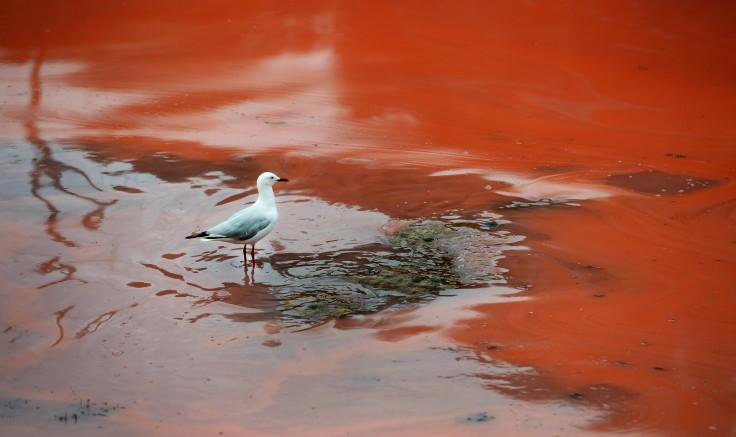What Are Algae Blooms, Why Is The Water Green? Lakes Change Colors Due To Several Factors

With summer now in full swing, many people have been able to take advantage of the warmer weather to head outdoors. But for environmental monitors, they also have to keep an eye on another problem during the season. Algae blooms are events where bodies of water experience high amounts of cyanobacteria growth in a brief period of time.
In some cases, this can cause bodies of water to turn colors like blue, red or green. Check out this video of a 2016 bloom in Utah Lake to see how quickly blooms can expand.
Read: Why Florida's Toxic Algae Bloom In 2016 Is Here To Stay, For Now
What causes an algae bloom?
Blooms are generally caused by several factors. For some context, cyanobacteria are naturally occurring organisms that live in lakes or other bodies of water. However, these cyanobacteria can start to overgrow under conditions that include warm weather, calm waters, high sunlight and, most importantly, large amounts of nutrients like nitrogen or phosphorus. Blooms generally occur most often during the summer and early fall.
Why do blooms turn different colors?
Visually, the variety of colors within blooms is especially striking. In photos, you can see entire lakes or large sections of water turned brick red or pea soup green.
According to Benjamin Holcomb, coordinator of biological assessment and harmful algal bloom programs at Utah’s Department of Environmental Quality, this comes from how organisms react during algae blooms.
“There is a wide variety of species of freshwater phytoplankton (aquatic organisms that obtain energy from the sun),” Holcomb told International Business Times. “From diatoms to Euglena and cyanobacteria to green algae, like land-based plants, each produces chlorophyll (green pigment), along with a wide variety of other pigments.”
The exact shade of color a bloom can turn into also depends on several internal issues.
“Depending on the particular organism that may be 'blooming', the bloom may be various shades of green, red, or brown,” Holcomb continued. “In the case of cyanobacteria, they produce a pigment called phycocyanin which produces the ‘cyan’ color that we see. In particular, as some cyanobacteria blooms begin to die or wash ashore, in a process similar to fall foliage, the cyan color is very apparent as the chlorophyll pigment is less dominant in the cell.”

What negative effects can algae blooms cause?
As unappealing as blooms look, they can have similarly negative effects to humans and animals. Blooms help encourage the growth of cyanotoxins, which have a variety of negative health effects like skin irritation, neurological or liver problems. Blooms also have negative carryover effects to areas ranging from tourism to local health. In the summer of 2014, a bloom in Lake Erie forced residents in Toledo, Ohio to temporarily use bottled water until it was fully treated.
Read: What Is Red Tide? Florida Beaches Clogged With Thousands Of Dead Fish
What can be done to prevent blooms?
While blooms are caused by a variety of factors, nutrient pollution is a major and human-caused contributor in their growth. Phosphorus and nitrogen can be introduced to lakes through channels including runoff from stormwater or local farms and industrial wastewater.
“There are quite a few different types of treatment (chemical, biological, physical) [for blooms],” Holcomb said. “All are short-term, limited fixes and I'm not aware of any that can be successfully applied across a typical-sized lake that contains aquatic life. The cure is to greatly reduce the amount of nitrogen and phosphorus entering and within the system. However, that takes time and often significant infrastructure changes if it involves wastewater improvements, stormwater control, and agricultural water use.”
© Copyright IBTimes 2025. All rights reserved.




















